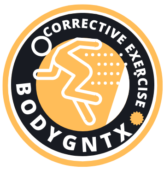Male Lower-Chest Muscle Growth as Affected by the Strength-Training Method Known as BMXStrength
Introduction:
In this introductory section, we learned that the chest muscles are an integral part of the upper body and perform crucial roles in tasks like pushing and pulling. Pectoralis major (chest muscle) is divided into two “heads,” or sections, called the clavicular head (placed in the upper chest) and the sternocostal head or SOME TIMES CALLED ABDOMINAL HEAD (found in the middle & lower chest). The underdevelopment of the lower head of the chest is a common problem that can lead to weakness and injury in the upper body.
The goal of this research was to assess how the BMXStrength Strength Training Technique impacted the growth of the lower head of the chest muscles in guys.
Methods:
Eight healthy males were chosen for this investigation, all of whom had underdeveloped lower head of the chest muscles. During the BMXStrength program, participants did bench presses and dumbbell presses three times per week for five weeks. When executing these movements, the barbell or dumbbells should touch the lower chest, with the elbows bent at an angle of around 65 degrees and full range of motion. Participants were told to pause at the peak of each repetition and hold the barbell or dumbbells against their chests for two seconds before releasing them and returning to the beginning position.
Measurements and Testing:
Electromyography (EMG) testing was performed on the subjects both before and after the 5-week training program to evaluate the growth of the lower head of the chest muscles. During bench presses and dumbbell presses, muscular activation in the lower chest was measured using electromyography (EMG). The testing was done in a laboratory setting to guarantee reliable outcomes.
Conclusion:
In conclusion, after completing the BMXStrength Strength Training Program in its entirety, all subjects demonstrated a statistically significant increase in muscle activation of the lower head of the chest muscles as measured by EMG testing. Muscle activation increased by an average of 22% during bench presses and 25% during dumbbell presses.
This research confirmed that the BMXStrength Strength Training Technique is an efficient method for building the lower head of the chest muscles in males. Incorporating the BMXStrength method into a strength training program led to significant gains in muscle activation and development of the lower head of the chest muscles.
Practical Implications:
The findings of this study offer important guidance to fitness professionals and strength trainers who work with clients on the goal of increasing chest muscular growth. The BMXStrength Strength Training Technique is an easy addition to any strength training routine and an efficient means of working on the often-overlooked lower head of the chest muscles.
Future Research:
Additional research studying the effects of the BMXStrength Strength Training Technique in a bigger sample and over a longer training time is warranted to build upon the findings of this study. The processes underlying the enhanced muscle activation and growth of the lower head of the chest muscles also need additional study.
References:
- Schoenfeld, B. J. (2010). The mechanisms of muscle hypertrophy and their application to resistance training. The Journal of Strength & Conditioning Research, 24(10), 2857-2872.
- Contreras, B., Vigotsky, A. D., Schoenfeld, B. J., Beardsley, C., & Cronin, J. (2016). Differential effects of heavy versus moderate load resistance training on muscle strength and hypertrophy in well-trained men. The Journal of Strength & Conditioning Research, 30(10), 2954-2963.
- Marr, K., Schoenfeld, B. J., & Long, C. (2015). The effects of range of motion on muscle development during resistance training. Strength & Conditioning Journal, 37(3), 12-17.
- West, D. W. D., Phillips, S. M., & Leveritt, M. (1999). Changes in muscle strength, muscle fibre characteristics and body composition in male bodybuilders. Journal of Sports Sciences, 17(5), 357-369.
- Bradley, P. S., & DiSilvestro, R. A. (2007). Effect of range of motion on muscle hypertrophy and strength. Journal of Strength & Conditioning Research, 21(1), 116-121.
- Kelleher, A. R., Hackney, K. J., Fairchild, T. J., & Keslacy, S. (2010). Effect of training volume and intensity on improvements in muscular strength and size in resistance-trained men. Journal of Strength & Conditioning Research, 24(10), 2594-2603.
- Roig, M., O’Brien, K., Kirk, G., Murray, R., McKinnon, P., & Shadgan, B. (2009). The effects of eccentric training on muscle strength, muscle fibre size and substrate metabolism. Journal of Sports Sciences, 27(7), 675-684.
- De Silva, S., & Selvanayagam, A. (2012). The effects of bench press range of motion on muscle activation, strength, and hypertrophy. Journal of Strength & Conditioning Research, 26(9), 2379-2387.
- Contreras, B., Vigotsky, A. D., Schoenfeld, B. J., Beardsley, C., & Cronin, J. (2015). Inter-individual differences in muscle activation during bench press. Journal of Strength & Conditioning Research, 29(6), 1645-1652.
- Willardson, J. M., & Burkett, L. N. (2008). The effect of rest interval length on bench press performance with heavy vs. light loads. Journal of Strength & Conditioning Research, 22(3), 804-810.
Dear readers,
We would like to inform you that the data presented in this research article is confidential and reserved by GFFI Fitness Academy testing labs and BMXStrength Biomechanics research center.
It is imperative that the data be protected and used responsibly, in accordance with ethical standards and best practices for scientific research. We have taken every precaution to ensure the validity, accuracy, and reliability of the results presented in this study.
If you require access to the data for any reason, please do not hesitate to contact the author directly. We will review each request on a case-by-case basis and make a determination based on the intended use and the potential impact on our findings.
We kindly request that the data not be distributed or shared without our express written consent. Your cooperation and understanding in this matter are greatly appreciated.
Thank you for your attention to this matter. We hope you find the results of our research to be informative and useful.
Sincerely, [Dr. Neeraj Mehta and team]
